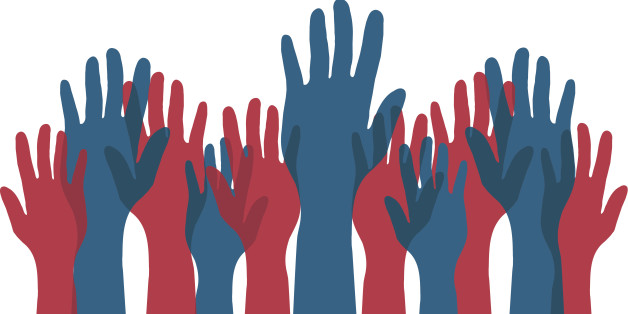
Comparative Study of Reservations in Malaysia and India
Malaysia is having 50 years old of preferential treatment to Malays who claim that they are the Bumiputres (Bhoomiputra in Indian languages, which means the sons (daughters) of the soil. It is said that they inhabited the Malay Peninsula before the Chinese and Indians came there. The Malays are largely Muslims and the preferential treatment extended to them includes all the aspects of economic life. The Malays have special provisions in the boards of the companies and they have preferential treatment in buying property. It extends to everything.
The preferential treatment came after the infamous riots where a score of Chinese were killed. Many countries, including South Africa, tried to learn from the Malaysian model of affirmative action. The original preferential treatment was to end after 20 years, but it went on all and all till its recent revision by the ruling party, UNMO, that enacted it.
It is important for India to learn from Malaysian model of inclusion of the “original inhabitants” in the economic life of the country. We have a model whose pluses and minuses are now available to enact, broaden, and fine tune the existing “reservation policy” in India. Of course, the case of Malaysia is different, as it deals with three races: Malays, Chinese, and Indians. India is having 6000 castes though the categorical groupings like SCs, STs, and OBCs have been constitutional groups. The religious minorities are also mentioned in the constitution alongside with the linguistic minorities.
Indian politics like Malaysian politics revolves around this preferential treatment, but in the case of Malaysia, it was left to the Malay-dominated ruling party that enacted these provisions. India started enacting reservations since 1935 when the mini-constitution of India came into being. Before that Shahu Maharaj of Kolhapur enacted reservations in his kingdom in the early 19th century. The rights to representation in various organs of the Government was won with the third party, the British, was in power. When the Indian constitution came into being in 1950, the reservation system was continued for the Scheduled Castes and Scheduled Tribes as a part of fundamental rights in Part III of the constitution.
The reservation was limited to particular areas; the army and judiciary were not included in it. The reservation was also not extended to the OBCs. Babasaheb Ambedkar fought hard on the behalf of the OBCs. Ironically, the so-called OBC leader from Gujarat, Patel, opposed reservation harshly and used dirty tactics to stall every attempt of Babasaheb Ambedkar to extend it to the OBCs. But Babasaheb Ambedkar insured that the OBCs needs to look into for the representation in the various organs of the Government. A special provision in the Indian constitution was made and because of that, the OBCs got whatever they got till now.
The reservation debate took place in India when Indian policy was not democratic but was dominated by the majority of the upper caste who benefited by the mobilisation of the Congress party. The south Indian states, especially the state of Tamil Nadu, paved a way for reservation for all. In perhaps mockery of the representative democracy, the Supreme Court restricted the reservation to only 50 percent. The state of Tamil Nadu did not budge.
The Indian politics revolves around caste and communalism. The Hindu nationalists underscore that Modi and the BJP have wiped out the factor of the caste in the Indian politics, but even a cursory analysis shows that they have been exploiting fissures in the Indian society and to a much extent.
From the Malaysian model, it is clear that it was Malay-dominated UNMO which enacted the preferential policy. In India, except the VP Singh Government, no Government was dominated by the SCs, STs, and the OBCs. Only the V.P. Singh Government dared to enact reservations for the OBCs through enacting the Mandal Commission. The party that will give true representation to the SCs, STs, and OBCs must emerge from them. They cannot rely on the RSS-led Brahmin dominated BJP for their representation. They have to emerge with a clear political formation with the demand for true democratisation of Indian society. This means the formation of a rainbow alliance. It is difficult for the SC, ST, and OBC leaders to form that coalition given the nature of the caste system India. Even the exploited and excluded are not ready to work together.
Secondly, the model of Malaysia can be studied and tinkered not to hurt the interests of any community. Indians can devise their own system homegrown to respond to a unique social setting that India has. Thirdly, the reservations must be enacted and extended in every organ supported by the Government. This includes the army, judiciary, businesses, and entertainment.
A negative list of the caste can be prepared on the lines of Shahu Maharaj’s policy where some castes should be restricted to a limited number of seats. They cannot overrepresent. Once the policy is enacted it will difficult to roll back, therefore, from the early on, the overrepresentation of the so called upper caste must be phased out in the phased manner. And lastly, there are many models to learn from and practiced. The American model, the Canadian Model, South African Model, and any other available models must be studied to remove possible faults.
Author – Mangesh Dahiwale, Human Rights Activist



Merit is useless, caste is everything.
A tremendous reply to all those who are against caste based reservation. This is a very good initiative by you people
But due to lack of unity we are still being suppressed, if there any measure that we can unite all our community and can fight against this cruelty… ..
Yes, we need to stay united and fight against the brahminical forces dividing us.